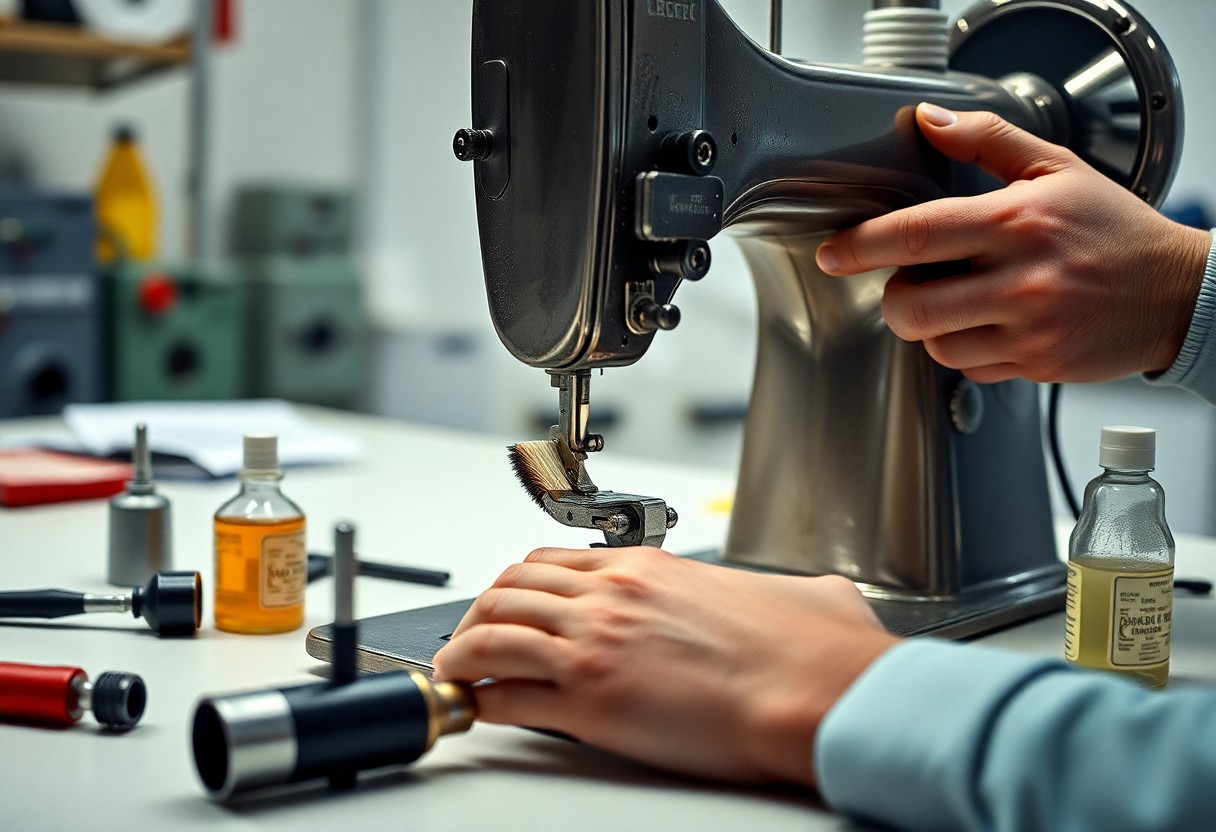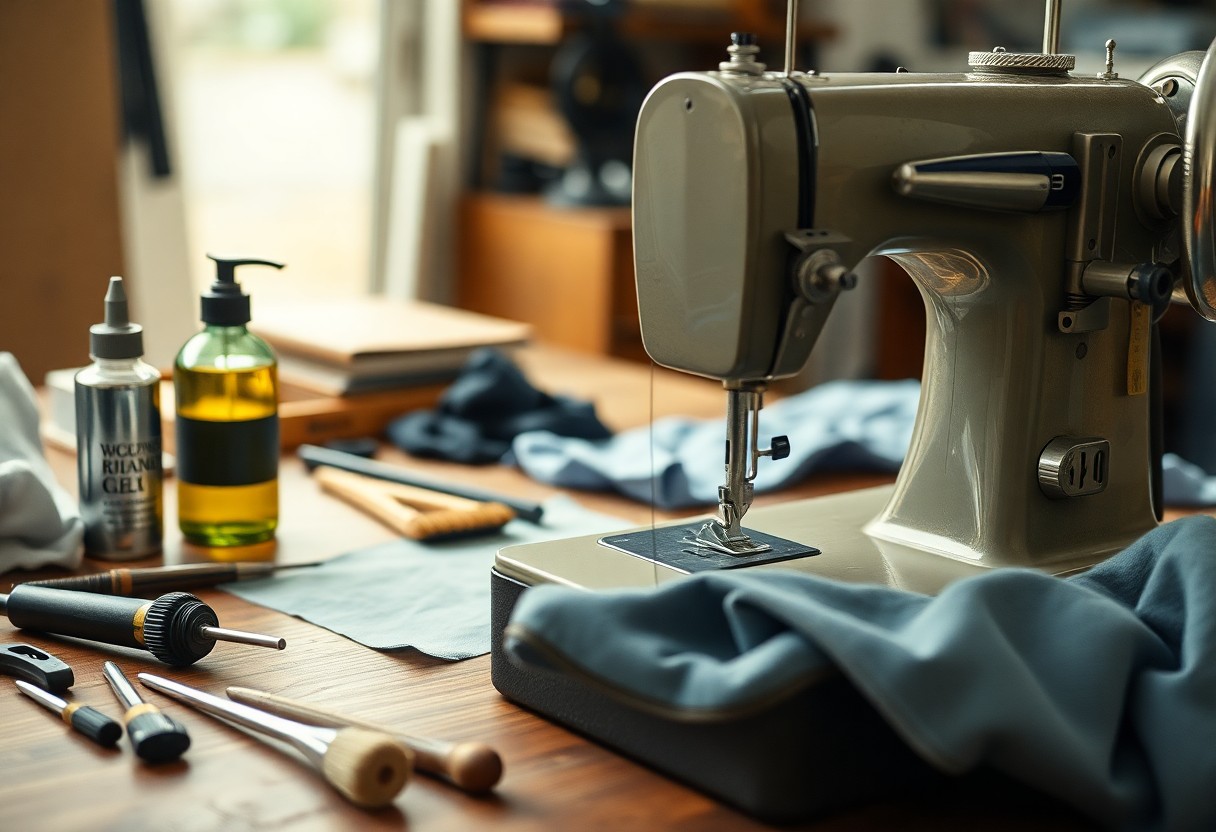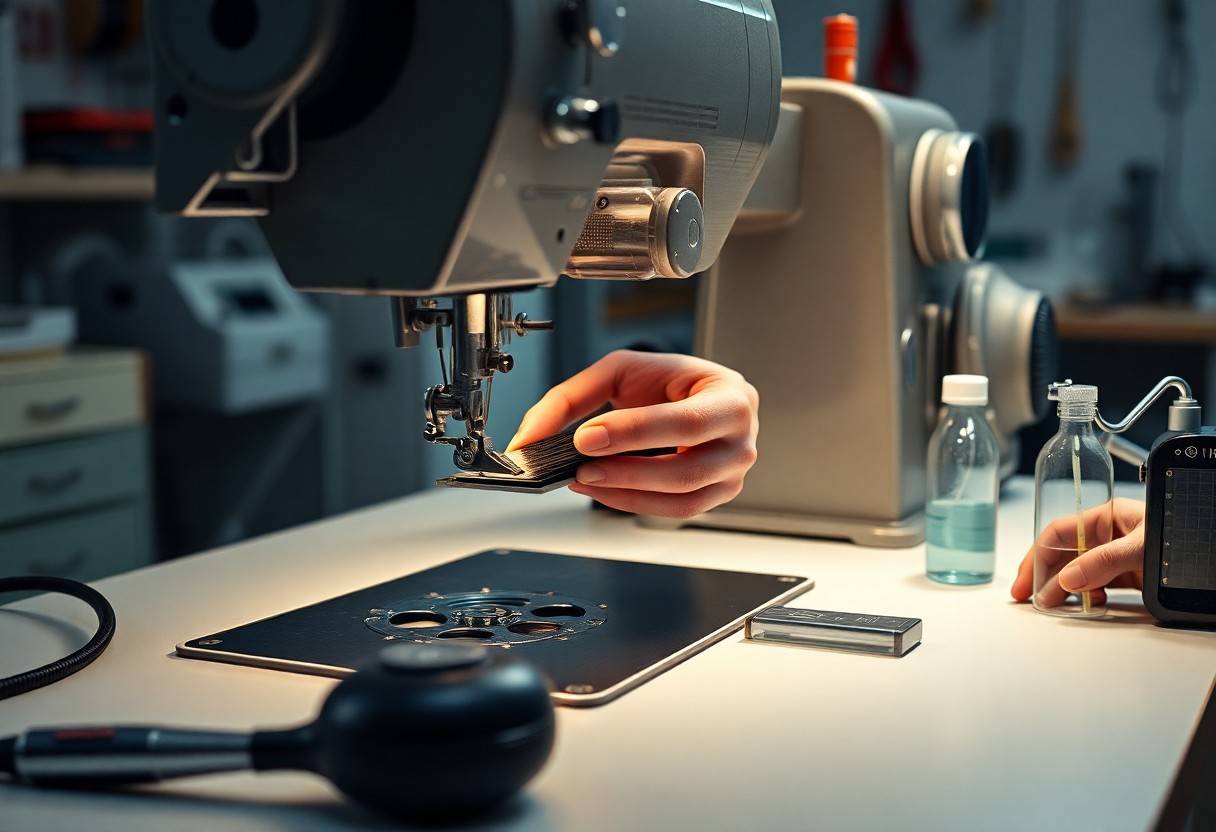Just like any reliable tool, your sewing machine requires regular upkeep to ensure it functions effectively. By following this maintenance guide, you can protect your investment and keep your machine running smoothly. Neglecting maintenance can lead to costly repairs or even permanent damage. With simple steps, you’ll enhance its lifespan and improve sewing performance, allowing you to focus on creating beautiful projects with ease.
The Anatomy of Your Sewing Machine: Understanding Key Components
Your sewing machine comprises various components that work together to create stitches and facilitate sewing tasks. Familiarizing yourself with these parts enhances maintenance, allowing you to address issues promptly and improve performance. Key elements include the needle, presser foot, bobbin, feed dogs, and motor, each contributing unique functions to ensure a seamless sewing experience.
Essential Parts and Their Functions
The needle penetrates the fabric to create stitches, while the presser foot holds the fabric in place during sewing. The bobbin stores the lower thread, and the feed dogs advance the fabric under the needle. The motor powers these components, providing the necessary speed and torque to drive the machine effectively. Each part plays a distinct role, making your understanding of them vital for smooth operation.
Common Wear and Tear Issues
Over time, certain components experience wear and tear, leading to performance issues in your sewing machine. This can include needle damage, worn-out feed dogs, or a malfunctioning motor. Regular inspection and maintenance can help identify these problems early, preventing more significant issues down the line.
Common wear and tear issues often manifest as skipped stitches, uneven feeding, or unusual noises. For instance, if your machine skips stitches, it could indicate a bent needle or improper threading. Worn feed dogs may fail to grip the fabric properly, making it difficult to sew accurately. Neglected belts or motors can cause your machine to run inefficiently or stall. Performing checks and ensuring timely replacements can prolong your machine’s lifespan significantly.

Essential Cleaning Techniques for Optimal Performance
Maintaining cleanliness in your sewing machine significantly enhances its longevity and functionality. Regular cleaning not only prevents the buildup of lint and dust but also ensures smooth operation. Implementing necessary cleaning techniques keeps your machine running efficiently, allowing you to focus on your creative projects without interruptions.
Removing Dust and Debris
Dust and debris accumulate around various parts of your sewing machine, primarily in the bobbin area and feed dogs. Use a soft brush or a vacuum with a small attachment to gently remove the buildup. Make it a habit to check and clean these areas after every few sewing sessions to keep your machine performing at its best.
Proper Oil Application Methods
Regular oil application is vital for minimizing friction between moving parts and maintaining smooth operation. Use a high-quality sewing machine oil specifically designed for your machine. Apply just a drop of oil to the designated areas, such as the needle bar, shuttle area, and any moving parts, ensuring that excess oil is wiped away to prevent attraction of dust.
Following the manufacturer’s guidelines on oiling is key. Typically, a few drops of oil are sufficient for each moving part. For horizontal hook systems, oil around the hook shaft and ensure that the needle bar is lightly lubricated. Be cautious to avoid over-oiling; excess oil can lead to messiness and attract debris. Regularly checking oil levels as part of your maintenance routine can extend the life of your sewing machine significantly.
Threading and Tension: The Crucial Factors
Threading properly and maintaining the correct tension are fundamental to achieving flawless stitches. Effective threading ensures the thread flows smoothly through the machine, while properly adjusted tension keeps stitches tight without breaking. Misalignment in either can lead to uneven stitching, thread jams, or skipped stitches.
- Threading technique
- Tension adjustment
- Stitch quality
- Common issues
Recognizing the significance of these factors is key in extending the life and performance of your machine.
Mastering Threading Techniques for Consistent Results
Correct threading techniques prevent many common sewing issues. Always consult your machine’s manual for specific threading diagrams and steps. Use high-quality thread and ensure it unwinds from the spool in the correct direction, passing through every guide without crossing or twisting. Tighten the thread into the tension discs by pulling it firmly to ensure even tension throughout your project.
Diagnosing and Adjusting Tension Issues
Adjusting tension requires keen observation of stitch quality. If stitches appear too loose or tight, investigate the tension settings on both the top thread and the bobbin. A properly balanced tension produces even stitches on both sides of the fabric. Learning to read the stitch output will enable you to make delicate adjustments for different materials.
Tension problems often stem from incorrect threading, worn tension discs, or incompatibility between thread and needle. If threads are looping on the bobbin side, your top tension may be too loose; conversely, if your stitches pucker, tighten the tension slightly. Use a tester fabric to fine-tune settings until you achieve a smooth, uniform stitch. Keeping a tension gauge handy can also help ensure consistent adjustments across different projects.
Regular Maintenance Routines to Extend Lifespan
Consistent maintenance routines are crucial to ensure your sewing machine operates at peak performance. Regularly cleaning, oiling, and checking components not only improves functionality but also extends the lifespan of your machine. Establish a routine that includes a quick clean after every project and more thorough inspections monthly. Investing time in these practices prevents dust buildup and wear, ultimately saving you from costly repairs.
Scheduled Servicing: What to Include
Scheduling servicing every year is key to maintaining your sewing machine’s health. During these sessions, include checking the motor, adjusting tensions, and replacing any worn parts. Ensure the technician also cleans the internal mechanisms thoroughly, as this can significantly affect performance. Keeping a log of your machine’s service history helps track maintenance patterns and identifies when parts might need replacement.
DIY Maintenance: Simple Tasks You Can Do
Performing simple DIY maintenance tasks can greatly enhance your machine’s longevity. Regularly clean the bobbin area, remove lint, and oil moving parts with the appropriate lubricant. Additionally, checking the needle’s condition and replacing it when dull can prevent fabric damage and improve stitch quality. Take time to inspect for loose screws and ensure all parts are securely fastened.
Start your DIY maintenance by unplugging your machine and removing dust with a small brush or vacuum attachment. Clean the throat plate and bobbin case frequently to prevent lint buildup, which can cause significant issues. Change the needle every 6-8 hours of sewing or immediately if it bends or breaks. Keep the machine oiled, following the manufacturer’s instructions, and perform regular checks on your presser foot pressure and stitch length settings to maintain accuracy. These straightforward tasks empower you to keep your sewing machine in prime condition between professional servicing visits.

Troubleshooting: Common Problems and Effective Solutions
Identifying sewing machine issues early can save time and frustration. Common problems include thread jams, skipped stitches, and uneven tension. You’ll often find that these issues stem from simple causes, such as incorrect threading or a dull needle. By familiarizing yourself with potential problems and solutions, you can ensure your machine operates smoothly.
Stitching Issues and Fast Fixes
Skipped stitches can be a major annoyance while sewing. This often occurs due to a dull or bent needle, incorrect thread tension, or improper threading. To quickly resolve this, replace the needle, adjust the tension settings, and re-thread your machine, ensuring that the thread passes through all necessary guides.
Handling Unusual Noises and Breakdowns
Unusual noises from your sewing machine typically indicate something is amiss. Grinding, squeaking, or rattling sounds often signal a need for lubrication or that parts may be misaligned. Investigating these noises promptly can help prevent further damage and extend your machine’s lifespan.
If you hear a grinding noise, check for any loose screws or parts. Tightening them can often eliminate the sound. For squeaking, applying a few drops of sewing machine oil to moving parts can resolve this issue quickly. Make sure to consult your machine’s manual for specific lubrication points. Should problems persist despite these efforts, it might be time to seek professional service to assess more serious breakdowns or misalignments.
Conclusion
Hence, by following this sewing machine maintenance guide, you can ensure your machine operates efficiently and lasts for years. Regular cleaning, proper threading, and timely servicing will keep your sewing experiences pleasurable and productive. When you invest time in maintenance, you enhance the performance of your machine, allowing you to focus on creating beautiful projects without interruptions.
FAQ
Q: How often should I clean my sewing machine?
A: It’s advisable to clean your sewing machine after every project or at least once a month if used regularly. This helps remove lint, dust, and debris that can affect performance.
Q: What type of oil should I use for lubricating my sewing machine?
A: Use lightweight sewing machine oil specifically designed for machines. Avoid using heavy oils or household oils, as they can cause buildup and damage the internal components.
Q: How can I tell if my sewing machine needs maintenance?
A: Signs that your sewing machine needs maintenance include unusual noises, skipped stitches, thread bunching, or the machine running sluggishly. If you notice these issues, it’s time for maintenance.
